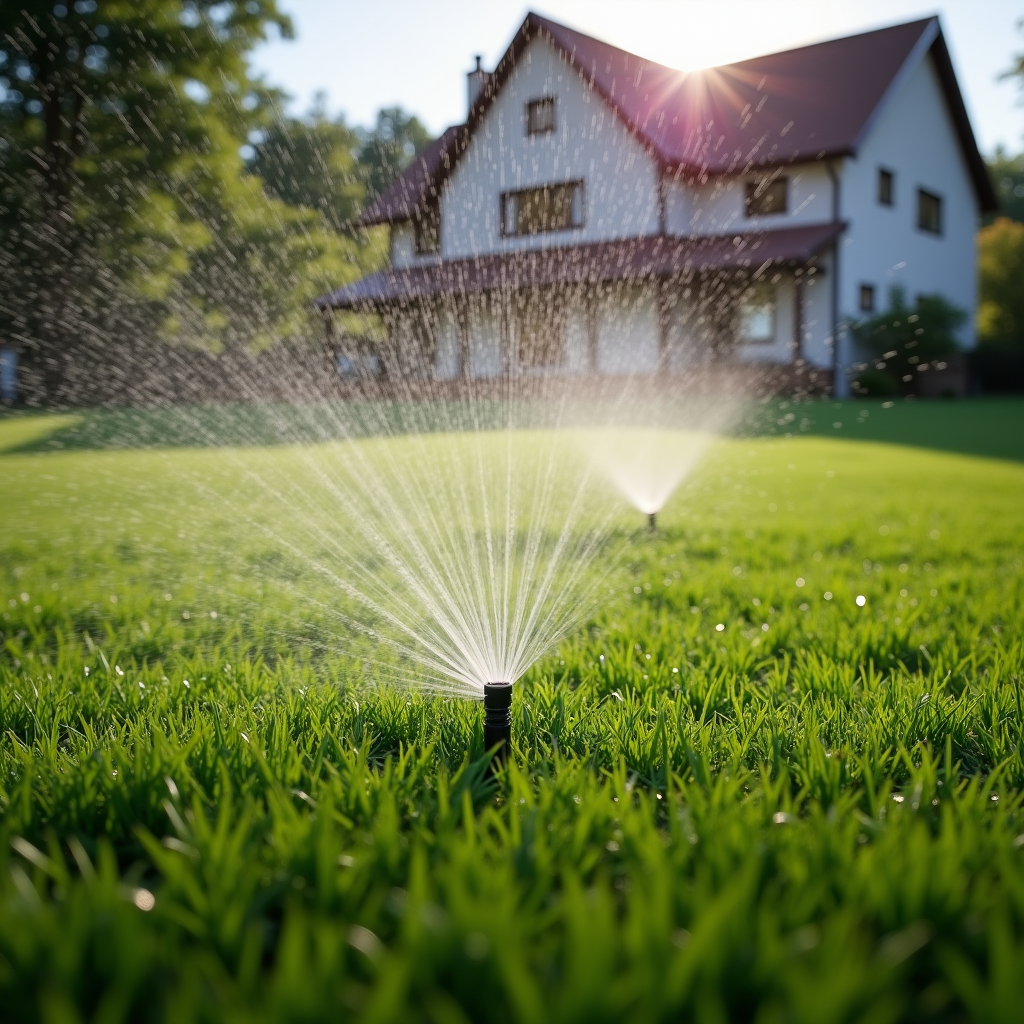Introduction
Welcome to the ultimate guide on lawn fertilization! If you’ve ever looked out at your yard and thought, “Why does my grass look so sad?” you’re not alone. A vibrant, lush green lawn is often seen as a symbol of home pride and community standing. But achieving that picture-perfect lawn doesn't happen by accident; it requires some knowledge about lawn care, particularly when it comes to fertilization.
In this article, we’ll dive deep into Lawn Fertilization 101: When and How to Feed Your Grass, exploring everything from the best times to fertilize to understanding soil types and nutrient needs. So grab a cup of coffee, roll up your sleeves, and let’s get started!
Understanding Lawn Fertilization
What is Lawn Fertilization?
Lawn fertilization is the process of applying nutrients to your grass to enhance its growth, color, and overall health. But what nutrients are we talking about? Typically, fertilizers contain three key nutrients: nitrogen (N), phosphorus (P), and potassium (K).
- Nitrogen stimulates leafy growth. Phosphorus promotes root development. Potassium helps with overall plant health.
By understanding these components, you can tailor your fertilization approach for optimal results.
Why is Lawn Fertilization Important?
You might wonder why you should even bother with lawn fertilization. The answer is simple: without adequate nutrients, your grass can become weak, brown, or patchy. Think of it like a well-balanced diet for humans—without essential vitamins and minerals, we don’t function at our best!
Common Misconceptions About Lawn Fertilization
Before we delve deeper into the specifics of lawn fertilization, let’s bust some myths:
More fertilizer means better grass: Not necessarily! Over-fertilizing can burn your grass. All fertilizers are the same: Different grasses have varied nutrient needs. Fertilizing in fall is unnecessary: Fall fertilizing can help strengthen roots for winter.Types of Lawn Fertilizers
1. Synthetic vs. Organic Fertilizers
One of the first decisions you'll need to make is whether to use synthetic or organic fertilizers.
Synthetic Fertilizers
These are man-made and provide quick-release nutrients that plants can absorb immediately. They often have higher concentrations of N-P-K but may lead to leaching if not applied correctly.
Organic Fertilizers
Organic options include compost, manure, or bone meal and release nutrients slowly over time. They improve soil structure but may take longer to show results.
2. Granular vs. Liquid Fertilizers
Granular fertilizers are typically spread across the lawn using a spreader while liquid fertilizers can be sprayed directly onto the grass.
Granular Fertilizers
- Easy application Slow-release formulas available Less frequent applications required
Liquid Fertilizers
- Fast absorption Ideal for immediate nutrient needs More labor-intensive application
When to Fertilize Your Lawn
Optimal Timing for Lawn Care
Timing is crucial when it comes to fertilizing your lawn effectively.
Spring Fertilization
Spring is a time of awakening for most grasses. As temperatures rise and growth resumes, applying fertilizer during this season will give your lawn the energy it needs after winter dormancy.
Summer Feeding Schedule
In warmer climates or during hot summers, a light feeding may be beneficial but ensure you're not overwhelming your turf with too much nitrogen.
Fall Applications
Fertilizing http://archergpxf397.bearsfanteamshop.com/natural-pest-control-solutions-for-your-lawn in fall allows grassroots to absorb nutrients before winter sets in—this strengthens them against cold stress and prepares them for spring growth.
How Much Should You Apply?
Understanding Application Rates
Knowing how much fertilizer to apply is just as important as knowing when to do it.
Recommended Application Rates
While every product will come with its specific recommendations based on its formulation:
- For granular fertilizers: Apply around 1 pound of nitrogen per 1,000 square feet. For liquid fertilizers: Follow label instructions closely as they vary greatly by concentration.
The Science Behind Soil Testing
Why Test Your Soil?
Ever heard the phrase "know thyself"? In gardening terms, that translates into knowing your soil's composition! Soil testing reveals pH levels and nutrient deficiencies that could impact your grass's health.
How To Test Your Soil?
You can choose between DIY kits available at garden centers or send samples off to a local cooperative extension service for analysis—whichever works best for you!

Creating a Lawn Care Routine
Developing an Annual Plan
To keep things organized throughout the year:

Common Problems in Lawn Care
Identifying Nutrient Deficiencies
A healthy lawn starts with proper nutrition—but sometimes things go awry! Keeping an eye out for these signs can save you time:
- Yellowing leaves? This could indicate nitrogen deficiency. Stunted growth? Phosphorus might be lacking.
Don’t fret! Most issues can be resolved through proper application of suitable fertilizers based on test results.
Seasonal Considerations in Lawn Care
Spring vs. Fall Care Needs
Your approach should shift depending on the season:
Spring Season Tips
As mentioned earlier—the focus should be on promoting new growth with adequate nitrogen content.
Fall Season Strategies
Instead of quick-release options like those used in springtime; slow-release formulas will work wonders here!
Environmental Factors Affecting Lawn Health
Weather Conditions Impacting Growth
Temperature fluctuations play a huge role in how well—or poorly—your grass performs:
Prolonged heatwaves may necessitate lighter applications more frequently. Heavy rains could wash away nutrients; consider using protective barriers during storms!Fertilizer Application Techniques
Best Practices for Application
Here’s where technique matters just as much as timing!
Always follow manufacturer guidelines carefully. Use calibrated spreaders or sprayers for even coverage. 3 Make sure conditions are dry; wet grass leads to clumping!Maintaining Healthy Soil Structure
Importance of Aeration
Aerating improves airflow within compacted soils allowing roots access essential oxygen needed for growth—it also helps with nutrient uptake post-fertilization!
FAQs about Lawn Fertilization
Q1: How often should I fertilize my lawn?
A: Generally speaking, every 6–8 weeks during active growing seasons should suffice—though this may vary based on species type!
Q2: Can I over-fertilize my lawn?
A: Yes! Excessive fertilizer can lead not only harmful burning but also increased pest activity due imbalance in natural ecosystems surrounding grasses themselves!
Q3: Is there such thing as an ideal pH level?
A: Most grasses thrive between pH levels 6–7 which fosters optimal availability essential macro/micronutrients required for healthy growth habits promote resilience against diseases/insect infestations alike!
Q4: Will rain wash away my fertilizer?
A: It depends! Light rains generally help activate granules; however heavy downpours could leach valuable nitrates right out into storm drains—not good news if aiming maximize effectiveness applications made beforehand…
Q5: Are organic options really worth it?
A: Absolutely! While they may require patience due their slower release rates—they contribute long-term benefits towards building healthy soil structures improving overall biodiversity within ecosystem itself making greener choices sustainable future generations ahead too!
Q6: What’s the best way store leftover fertilizer?
A: Keep unopened bags sealed tightly away from moisture/heat sources until ready use again—opened containers should ideally transferred airtight bins prevent spoilage caused exposure air/water sources might occur otherwise leading wastage otherwise possible savings preventable too…
Conclusion
To wrap things up nicely here—in-depth knowledge makes all difference achieving stunningly beautiful lawns everyone admires neighbor envy! Remember effective scheduling combined with appropriate practices ensures lush green spaces beyond compare flourish throughout seasons ahead ensuring lasting enjoyment families friends alike amidst vibrant landscapes enriched life experiences shared together outdoors enjoying nature’s bounty maximizing potential gardens homes everywhere alike thrives harmoniously forevermore…
So whether it's springtime rejuvenation or autumn preparations—you now have all tools at hand tackle any challenges coming way confidently armed expertise gained from reading this comprehensive guide today!
Happy Gardening! 🌱